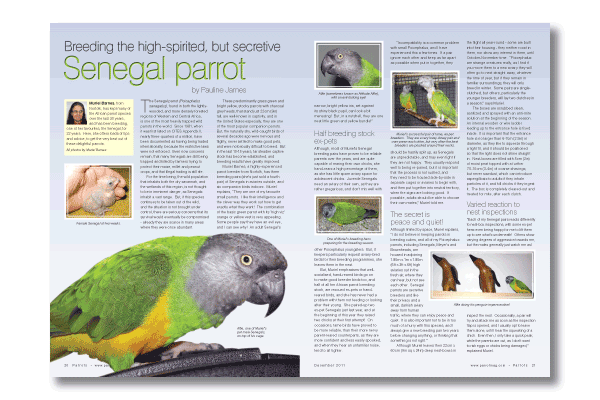Breeding the high-spirited, but secretive Senegal parrot
by Pauline James
Muriel Barnes, from Norfolk, has kept many of the African parrot species over the last 30 years, and has been breeding, one of her favourites, the Senegal, for 22 years. Here, she offers loads of tips and advice, to get the very best out of these delightful parrots.
The Senegal parrot (Poicephalus senegalus), found in both the lightly-wooded, and more densely forested regions of Western and Central Africa, is one of the most heavily trapped wild parrots in the world. Since 1981, when it was first listed on CITES Appendix II, nearly three-quarters of a million, have been documented as having being traded internationally, because the restrictive laws were not enforced. Even now concerns remain, that many Senegals are still being trapped and killed by farmers trying to protect their maize, millet and peanut crops, and that illegal trading is still rife.
For the time being, the wild population that inhabits both the dry savannah, and the wetlands of this region, is not thought to be in imminent danger, as Senegals inhabit a vast range. But, if this species continues to be taken out of the wild, and the situation is not brought under control, there are serious concerns that its survival would eventually be compromised - already they are scarce in many areas where they were once abundant.
Read more in the magazine…









Parrot Chat
Buyers Guides
Breeding articles